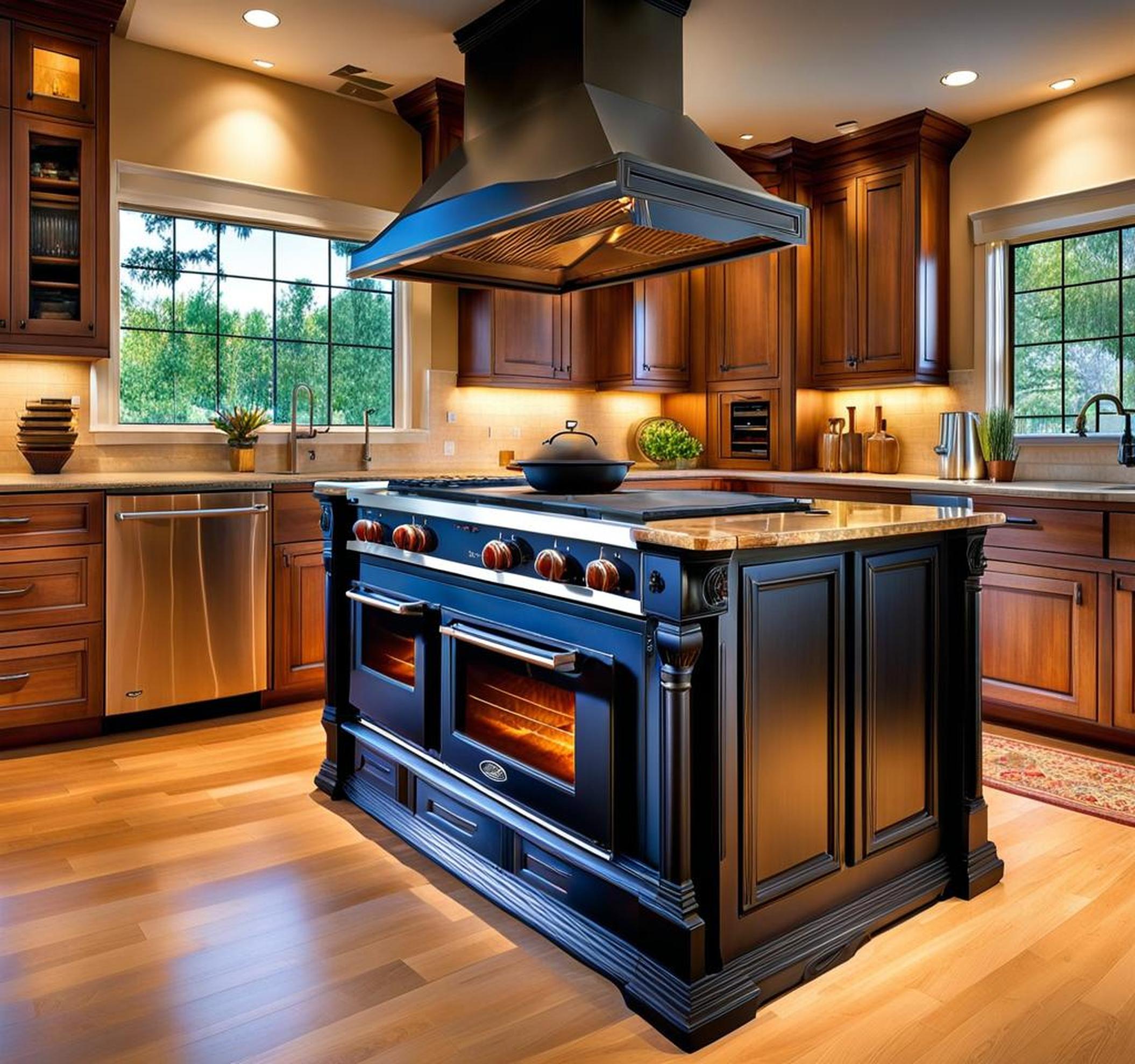Kitchen islands with integrated stoves are an increasingly popular focal point in modern, open concept home designs. Rather than wall ovens and standalone cooktops, innovative island stoves allow for centralized access to cooking appliances in an attractive, streamlined way. They promote better workflow, visual appeal, and social interactions in spacious kitchens and great rooms. From sleek induction cooktops to built-in ovens, island stoves offer expansive creative possibilities. But careful planning for ventilation, utilities, and design are needed to fully realize their benefits.
Types of Island Stoves
There are several configurations of stoves that can be incorporated into a kitchen island design:
Cooktops and Ranges
Integrated cooktops and ranges allow the island to function as the primary cooking surface in an open kitchen. Options include:
- Glass induction or electric cooktops with smooth, modern aesthetics.
- Gas cooktops and ranges providing responsive, precise temperature control.
- Combination ranges with both a stove cooktop and oven in a single island unit.
Built-In Appliances
In addition to cooktops, islands can accommodate other cooking appliances:
- Wall ovens installed vertically in the island.
- Microwaves and warming drawers conveniently at the chef’s fingertips.
- Grills allowing indoor barbecuing year-round.
- Integrated dishwashers with panels matching the surrounding cabinetry.
Island Stove Benefits for Open Kitchens
Island stoves offer unique advantages for spacious, open concept kitchen designs:

Promote Better Workflow
An island stove provides centralized access to the primary cooking appliances in an open kitchen floorplan. This allows for improved workflow, including:
- Shorter distances between cooking, prep, and serving areas.
- Simultaneous access to multiple appliances when cooking complex meals.
- Easy monitoring of several dishes cooking at once.
Enhance Visual Appeal
Island stoves also provide aesthetic benefits, such as:
- A streamlined look with uninterrupted countertop sightlines.
- A minimalist, integrated focal point in a large, open space.
- A sleek modern design for entertaining guests.
Improve Interactivity
Additionally, an island stove facilitates social interactions in open floorplan kitchens since the chef can face the living and dining areas while cooking. Benefits include:
- Conversation with family, guests, and kids while preparing meals.
- Teaching cooking skills as kids can gather around the island stove.
- Multitasking between cooking and entertaining.
Design Considerations
While the benefits are plentiful, effectively incorporating an island stove requires some careful planning:
Size of Island
The island must be large enough to accommodate the stove(s) with adequate safety clearances. Consider space for:
- Landing areas on both sides of the stove.
- Cooktop dimensions and clearance to edges.
- Flammable storage guidelines of 42 inches from the cooking surface.
Ventilation
Proper ventilation is essential for island stoves. Options include:
- Downdraft systems built into the island itself.
- Range hoods mounted to the ceiling above.
- Ductwork running below floors or in ceiling cavities.
Utilities
Related utilities should also be well-planned:
- Gas lines routed to the island location if using a gas cooktop or range.
- Sufficient electrical service for induction or electric cooktops.
- Upgraded electrical panel capacity if needed.
Material Selection
The design of the island should coordinate with the kitchen’s overall style, including:
- Heat-resistant countertop materials like granite, marble or quartz.
- Matching cabinetry finishes and hardware.
- Coordinating backsplashes and accent details.
Integrating Induction Cooktops
Induction cooktops are particularly well-suited for seamless integration into kitchen island designs:
How Induction Cooking Works
Induction uses electromagnetic energy to heat pans directly instead of traditional coils or burners:
- An induction coil below the glass surface produces a magnetic field.
- When an iron pan is placed on the cooktop, eddy currents flow through the pan, heating it rapidly.
- Only the pan and its contents are heated, not the cooktop itself.
Benefits
Benefits of induction cooktops include:
- Very energy-efficient heating.
- Instant and precise temperature response.
- Cool-to-the-touch surface after cooking.
Smooth, Seamless Look
Induction cooktops blend in beautifully when installed in an island:
- Glass surface is flush with the countertop.
- Clean, modern aesthetic.
- Available in multiple sizes to fit your island cooktop layout.
Island Stove Shopping Tips
Ready to add an island stove to your open concept kitchen? Keep these tips in mind:
- Decide between gas or electric based on your cooking preferences.
- Select a built-in downdraft or remote range hood for ventilation.
- Carefully measure planned island size and cooktop clearances.
- Consult with kitchen designers about required utilities and connections.
- Browse induction cooktop options for a streamlined look.
Integrating a stove into a kitchen island is an excellent way to maximize space, improve flow, and enhance visual appeal in an open floorplan. Careful planning is needed for ventilation, utilities, layout, and clearances. Choose a cooktop style like induction that complements your design vision. With strategic forethought, an island stove can become a stunning focal point that gives your chef greater freedom and flexibility. Most importantly, it allows you to effortlessly share meal preparation with loved ones in a spacious, modern kitchen. Why settle for less when you can create a sensational island stove that will wow guests at your next dinner party?
